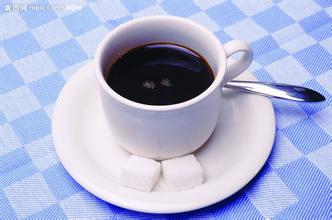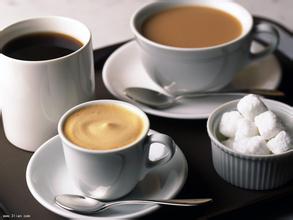Introduction to the flavor and taste characteristics of Panamanian Alida Manor Coffee with special sweetness and vanilla flavor
The Panamanian isthmus used to be Chibucha, Caribbean and other Indian departments.
panama canal
panama canal
Settlement.
In 1501, Panama was colonized by Spain and belonged to the Governor of New Granada.
In 1821, Panama became independent and became part of the Greater Republic of Columbia.
In 1830, after the disintegration of the Republic of Great Columbia, it became a province of the Republic of New Granada (later known as Colombia).
In 1903, after defeating Britain and France, the United States signed a treaty with the Colombian government to build and lease canals, which the Colombian Congress refused to ratify.
On November 3, 1903, American troops landed in Panama, instigating Panama to become independent from Colombia and establish the Republic of Panama. On November 18 of the same year, the United States acquired the permanent monopoly to build and operate the canal and the permanent use, occupation and control of the canal zone. And dug a canal in the bee waist area in central Panama, so that the canal area became a "state-in-state" in Panama.
During World War II, the United States forcibly leased 134 military bases in Panama in 1947.
Panama City
Panama City
And then returned some of them one after another.
In September 1977, Pakistan and the United States signed the Panama Canal Treaty (also known as the Torrijos-Carter Treaty).
In May 1989, in the Panamanian general election, both the ruling party and the opposition party claimed victory, so the election result was invalid. With the good offices of the Organization of American States, Rodriguez became interim president on August 31. Noriega, who opposes the US occupation, was appointed head of government on December 15. On the 20th, US troops invaded Panama. On the 21st, Ndalla, the former opposition presidential candidate sheltered by the United States, was sworn in as president at the US military base. [5]
In January 1990, Noriega surrendered to the US military and was taken to the United States to stand trial.
On October 4, 1994, the Pakistani parliament adopted a draft amendment to the Constitution, which provides for the abolition of the army and the establishment of a police force.
On December 31, 1999, Panama regained the sovereignty of the canal. [5]
Elected as a member of the United Nations Human Rights Council on 28 October 2015 for a term from 2016 to 2018
Panama is a small country located in the center of the American continent. The waters of the Atlantic and Pacific oceans flood its beaches.
Panama is located at 9 degrees north latitude, the meeting point of the Central Mountains, where Mount Baru, one of the highest volcanoes in Central America, is located.
The Baru volcano has an altitude of more than 11400 feet, and the land around it is rich in nutritious and fertile soil, providing sufficient conditions for the sowing and cultivation of coffee endemic to Panama.
The appropriate microclimate, soil, temperature and height of these highlands are suitable for sowing, planting and harvesting a variety of unique coffees. These coffees have jasmine, citrus, ripe fruit, berries, caramel, special sweetness, vanilla, chocolate and other flavors.
Unique coffee
Panamanian coffee is classified and numbered into small batches, which are designed to have a small capacity for optimal management, and classification numbers allow buyers to understand and track the entire process.
Because of its small quantity, Panamanian coffee products are based on special coffee. The country provides its high-quality products to specialized stores around the world, such as Denmark, the United Kingdom, Greece, Norway, Sweden, South Korea, Japan, Taiwan Province of China and the Panamanian Highlands of the United States. The microclimate is the most important resource that makes Panamanian coffee unique. The most important resource that makes Panamanian coffee unique is its microclimate. The east-west environment of the Republic of Panama converges cold air over 6500 feet through the Central Mountains, creating a variety of microclimates in the Boquete and Volc á n-Candela regions, making it a major source of Panamanian coffee. These unique coffees are cultivated in nutritious and balanced land located in the Baru volcano region.

Important Notice :
前街咖啡 FrontStreet Coffee has moved to new addredd:
FrontStreet Coffee Address: 315,Donghua East Road,GuangZhou
Tel:020 38364473
- Prev

The whole soft, slightly sour Salvadoran coffee flavor manor introduces the characteristics of Mercedes Manor.
From 1549 to 1763, El Salvador was the first capital of Brazil, witnessing the fusion of European, African and American cultures. As the slaves arrived in El Salvador in 1558 to work in sugar cane plantations, it also became the first slave market in the new world.
- Next

Introduction to the characteristics of Panamanian Jade Manor Coffee Flavor
In 1903, after defeating Britain and France, the United States signed a treaty with the Colombian government to build and lease canals, which the Colombian Congress refused to ratify. [5] on November 3, 1903, American troops landed in Panama, instigating Panama to become independent from Colombia and establish the Republic of Panama. On November 18 of the same year, the United States acquired the permanent monopoly right to build and operate the canal and the permanent use of the canal zone.
Related
- Does Rose Summer choose Blue, Green or Red? Detailed explanation of Rose Summer Coffee plots and Classification in Panamanian Jade Manor
- What is the difference between the origin, producing area, processing plant, cooperative and manor of coffee beans?
- How fine does the espresso powder fit? how to grind the espresso?
- Sca coffee roasting degree color card coffee roasting degree 8 roasting color values what do you mean?
- The practice of lattes: how to make lattes at home
- Introduction to Indonesian Fine Coffee beans-- Java Coffee producing area of Indonesian Arabica Coffee
- How much will the flavor of light and medium roasted rose summer be expressed? What baking level is rose summer suitable for?
- Introduction to the characteristics of washing, sun-drying or wet-planing coffee commonly used in Mantenin, Indonesia
- Price characteristics of Arabica Coffee Bean Starbucks introduction to Manning Coffee Bean Taste producing area Variety Manor
- What is the authentic Yega flavor? What are the flavor characteristics of the really excellent Yejasuffi coffee beans?

